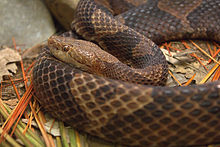Sometime last year, I decided that I should eat fruit and
yogurt for breakfast. I think it was a book or an article lauding the nutritional
value of yogurt--or maybe it was decrying carbohydrates—but for whatever
reason, I abandoned my twenty year relationship with Raisin Bran.
The problem with fruit and yogurt was that it just wasn’t
sweet enough, and I found myself adding a spoonful of jam to the mix. The other
problem was that the change to my daily regimen yielded no benefits to weight
loss or well being, despite the imposition of a modest gustatory cost.
So I decided to try smoothies, which have essentially the
exact same ingredients, but have the added benefit of being a pleasure to
consume. Shortly thereafter, the BG, when ordering her afterschool snack—which we
often discuss on the way to the bus stop in the morning—or her bedtime beverage—which
we enjoy as we sit down to NBA basketball most evenings—began asking regularly
if a smoothie option were available. And my regular readers will no doubt
recall that the Lunch of a Lifetime included one.
So now I make them almost every day, a blenderfull for my
breakfast, Worldwide’s post-walk refresher, and either an afterschool snack or
late night beverage for the BG. Over the last few months I have learned a few
things about the process that I think worthy of sharing.
Frozen Fruit is Better
Some time when you have a few minutes, I encourage you to
look carefully at the frozen section of your local supermarket. It is an
Aladdin’s Cave of interesting items (who buys that?) and intriguing
possibilities. In addition to the smoothie ingredients (more on that below) we all
like ice cream (each family member is entitled to a pint or a box of novelties of
their choosing per week); the OG likes soft pretzels (a regular part of her packed
school lunch); the BG likes Morningstar veggie dogs, burgers, sausage links and
bacon (yes, that’s right, vegetarian bacon. It looks and tastes kind of like the
real thing, although, in my heart of hearts, I fear that the health
consequences of the science required to create a vegetarian version of cured
pork bellies are not yet fully appreciated); and I like frozen peas and chopped
spinach, which help make it easy to complete pasta dishes, stir fries and
curries.
On the fruit side, in addition to expediting the smoothie
making process (no mangoes to peel and core), the gelid state makes for a
better consistency and a perfect temperature. If I am using fresh fruit, I’ll
throw in a few ice cubes to approximate the process. Alton Brown suggests
putting your fresh fruit in the freezer the night before, but I just don’t have
the wherewithal for that level of preparation.
Trader Joe’s has the best prices on frozen fruit, although
Harris Teeter has four ounce packs of fruit purees (peach, strawberry, mango,
pineapple, acai) from Brazil, and yesterday, while I was looking for hibiscus
flowers at the local Mexican grocery store (I walked over during the 45 minutes
between dropping the BG and her homeboys (the next door neighbours have two
boys a year older and younger than she) at Tae Kwan Do and then driving them
home) I found 14 ounce packages of frozen pureed papaya, mango, pineapple and
guava at half the price of the Brazilian competitor. This is part of the reason
why today’s recipe features the wonderfully fragrant, though disappointing
guava, which we used to see all the time in the Maadi fruit markets on Road 9.
Add the liquids first to chop
the fruit more easily
It’s counterintuitive, but it works. I start with the liquid
(usually fruit juice), then add the yogurt, and then the solids. Run the
blender for about 30 seconds on low speed, then 30 seconds on medium, and then
a minute on high. You’ll know things are blending nicely, when you can see a
little whirlpool at the top of the blender sucking stuff down to the bottom.
Sometimes, if the mixture isn’t blending well, it’s because an air pocket is
interfering. In this case, stop the blender, take off the lid, and wait for your
baby to burp (remember those days?) Then finish the blending.
Sweeten the Pot
Worldwide likes her
beverages a little sweeter than the BG and I, but even a sourpuss like me will
sometimes need a little added sweetener. I generally use a tablespoon or two of
honey, although, because the sugar ants will swarm to a sticky lid, and can
even somehow squeeze their way into sealed jars, we keep our honey in the
fridge, which makes it a little hard to pour. For this reason, I ordered some
powdered honey from Amazon (it has the consistency of confectioners’ sugar).
Recipe Tips
The recipe below just sounded good to me this morning, and I
was pleased with the results. The red berry smoothies have been the most
popular, as well as the berry/peach and berry/mango blends. Blueberries, kiwis,
bananas, papaya, watermelon, cherries and peaches don’t seem to be capable of
standing alone, although they add nuance. The BG likes the all-fruit editions,
and Worldwide likes the consistency that a ripe banana adds to the mix. I just
like experimenting, which makes it hard to have a favourite. My choices this
morning were guava, papaya and peach purees, frozen blueberries, mango chunks,
raspberries and a berry medley (raspberries, blackberries, strawberries and
blueberries), a product which we have found to be a fantastic addition to our
weekend favourite buttermilk pancakes (but that’s another post). I also had bottles
of orange and cranberry juice in the fridge, as well as ”Mixed Berry” juice boxes (a 100% juice blend
of apple, grape and berry juices). I chose the juice box, as, for some reason,
its per unit cost is the lowest. Plus it’s the perfect size.
I measured fairly carefully this morning, since I had plans
to blog about it later; usually I just do it by eye, knowing that I can add
stuff at the end if the consistency or sweetness is not optimal. I also meant to use one of the first South Carolina peaches of the season, which had gotten a little overripe and needed to be cut up, but I forgot. Still, you can see the utilitarianism of such a plan.
Raspberry Guava Smoothie
Pour one mixed berry
juice box (6.75 ounces) into the blender. Add 1 cup of plain yogurt, 1 cup of
frozen raspberries, 1 cup of guava puree, 1 scant tbs of honey powder. Blend 30
seconds on low speed, then another 30 on medium speed, listening for the sound
of the blender working on the fruit). Blend an additional one minute on high
speed. Taste and add liquid, yogurt or sweetener as appropriate. Serve.






